PLEASE NOTE: The information in this blog is for educational purposes only. It is not a substitute for professional medical advice. Consult your healthcare provider if you’re seeking medical advice, diagnoses, or treatment.
In a given year, Americans are exposed to bacteria, parasites, and other foodborne pathogens that result in an estimated 48 million illnesses (half of which come from produce!)(1). Foodborne illness is estimated to cause 5,000 deaths per year in the US (2).
Consuming any food or beverage comes with some level of risk. Yet, one item gets more attention and legal action than any other, and that food is raw milk.
Some countries (like Canada and Australia) have banned it outright, while certain countries eat it freely and rave about its benefits.
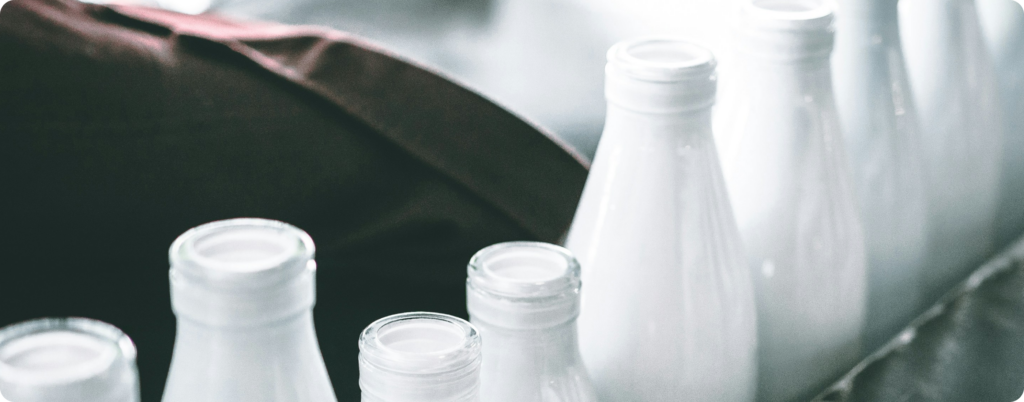
In this article, we’ll discuss the history of raw milk, why it’s wrongfully vilified, and answer questions like, is raw milk safe?
What is Raw Milk?
Milk is a phenomenal source of protein, fat, and minerals like calcium and magnesium (3). Raw milk (sometimes called unpasteurized milk) refers to milk that hasn’t been pasteurized.
Pasteurization is when milk is heated to a specific temperature for a set time to kill bacteria and increase shelf life (4).
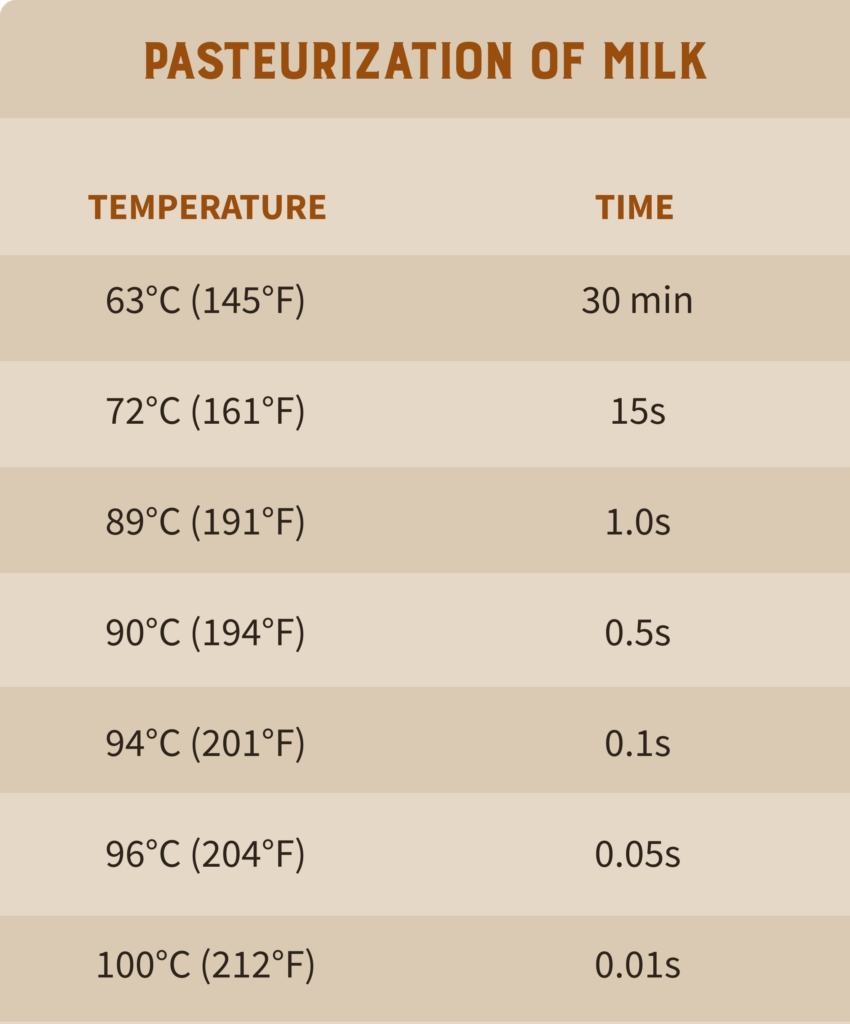
Raw milk differs from pasteurized milk in various ways.
One of the most notable differences between raw and pasteurized milk is the composition and presence of bacteria (5). Pasteurized milk from the grocery store may last for months, while the shelf life of raw milk is much shorter (typically around one week).
Many consumers want to support local farms and businesses, so they choose raw milk as it’s primarily produced locally. Improved taste, freshness, and nutrient density are popular reasons for choosing raw milk (6).
Animals raised on pasture (as is often the case with raw milk) can have a higher omega-3 fatty acid content (7). While milk is mainly a major source of vitamin B2 (riboflavin), studies have shown that pasteurization may reduce folate concentrations and vitamins C, E, B2, B1, and B12 (8, 9).
Homogenization and heat treatment of milk can negatively impact the protective components of raw milk (10).
Pathogens such as E. Coli, salmonella, campylobacter, and listeria are more likely to be found in raw milk (11), but pasteurized milk still contributes to various outbreaks. Problems can still arise due to improper food handling (12).
For example, a 1985 salmonella outbreak in Illinois was traced back to pasteurized 2% milk from a single dairy plant (13). This outbreak affected more than 168,000 people!
A systematic review from 2007-2020 also found 17 deaths and 7 fetal losses related to pasteurized dairy products (14).
Raw Milk is Consumed Globally
Worldwide evidence shows that humans have consumed dairy products for thousands of years, as early as 8500 BP in Turkey (15)! Today, raw milk is consumed globally, and demand for it has increased despite the known risks (16).
Various African and European nations regularly consume raw milk. Since the 1930s, the Germans have incorporated federally regulated raw milk (called Vorzugsmilch) for direct consumption (17).

Gouda farmhouse cheeses in the Netherlands are prohibited from being pasteurized, and French artisanal cheeses from raw milk are considered superior to pasteurized cheeses (18).
Raw milk is popular on an animal-based diet, and about 1-2% of the adult US population consumes raw milk weekly (19, 20).
Is Raw Milk Safe?
Pasteurization became commonplace in the early 1900s in the United States after milk was linked to outbreaks such as tuberculosis (21). By 1900, an estimated 10% of human tuberculosis infections came from milk consumption, and in 1910, a tuberculosis epidemic impacted over 300,000 cattle in Illinois (22). But there’s a reason…
These outbreaks were often due to cows being raised in unnatural city environments, without pasture, in filthy conditions, and on poor diets (23). Cows were even fed byproducts from alcohol distilleries.
Many government agencies now ban raw milk due to prior outbreaks of pathogens such as salmonella, listeria, tuberculosis, and E. Coli (24). The CDC in the US and Health Canada advise that women, children, the elderly, and those with compromised immune systems may be at risk of serious illness from raw milk consumption (25).
Dairy can be contaminated by the passage of cow blood into the milk, fecal contamination, contact with insects, contamination from human skin, or udder infection (26).
Current outbreaks from raw milk are often connected to dairy farms that haven’t received proper training on hygienic milking or hazard reduction (27). Outbreaks connected to raw milk consumption are also subject to detection bias as it’s easier to trace issues back to a niche community with fewer consumers (28).
At this point, you may be asking, how many people actually get sick from raw milk consumption? The exact number is unclear, but here’s what we do know.
A review of dairy-associated outbreaks from 1993-2006 discovered 1,571 cases, 202 hospitalizations, and 2 deaths from unpasteurized products (29).
Another study reported these statistics on pasteurized and unpasteurized dairy outbreaks from 2005-2016 (30):
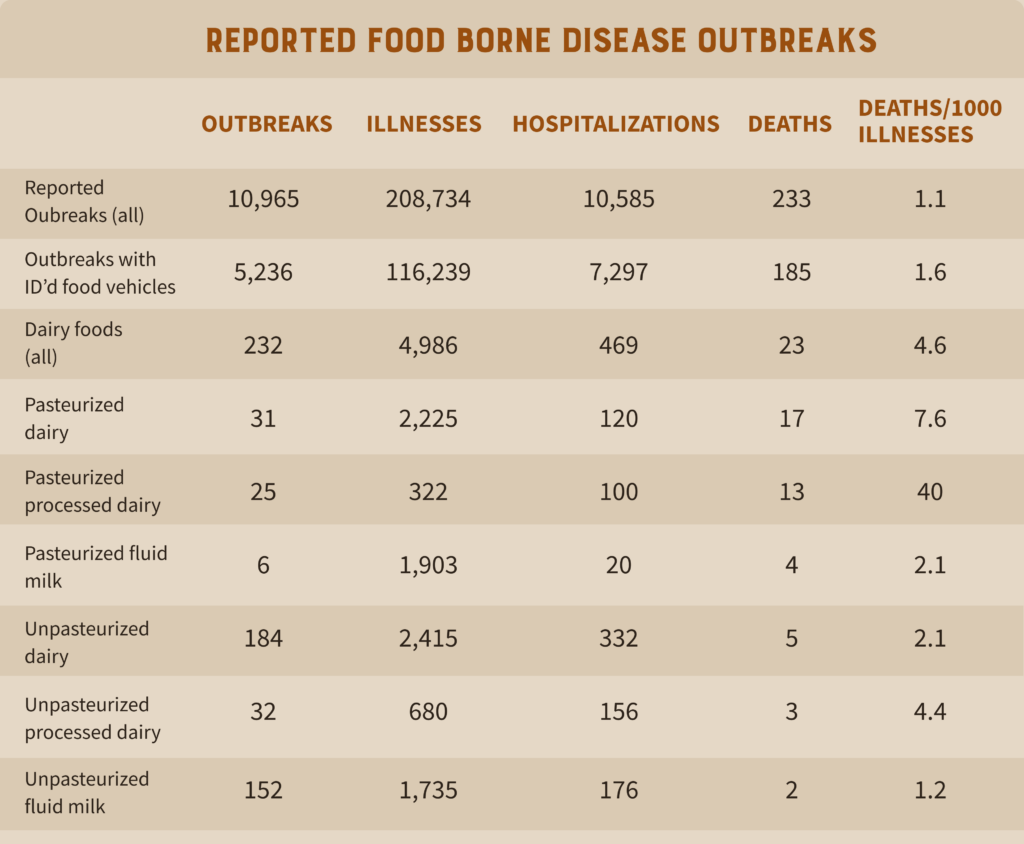
Despite increased distribution, outbreaks connected to raw milk have been declining since 2010, and the outbreak rate since 2005 has decreased by 74% (31).
Producers across the globe have demonstrated that raw milk can be produced safely (32).
The Many Benefits of Raw Milk
Raw milk can be produced safely and provide benefits throughout your body.
Asthma levels are inversely associated with raw milk consumption, and animal models have confirmed these findings (33, 34).
Raw milk consumption is associated with lower eczema symptoms (35). It has also been shown to reduce allergies and prevent allergic diseases (36, 37).
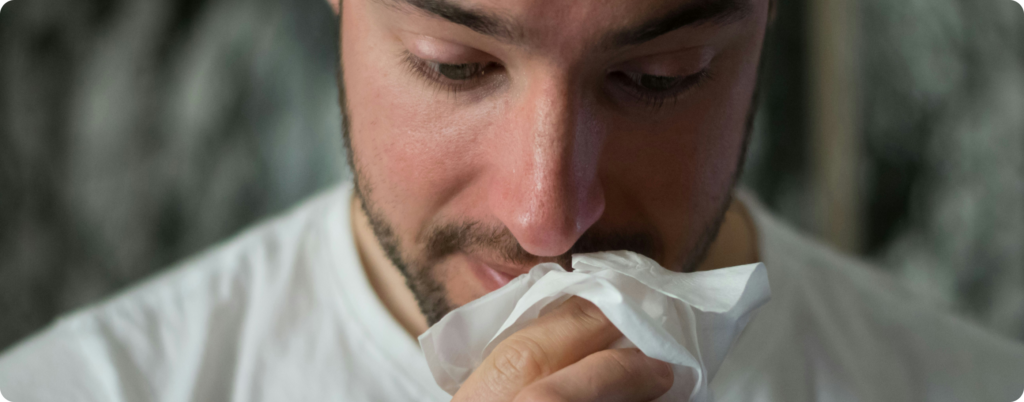
Compared to pasteurized yogurt, unpasteurized yogurt reduced lactose malabsorption (milk intolerance)(38).
One study on 983 infants in rural areas of Finland, Germany, Switzerland, France, and Austria found that raw milk consumption early on in life reduced the risk of fever and respiratory infections (a major cause of mortality) by almost 30% (39).
Raw dairy intake has also been connected to the growth of lactobacillus (considered to have probiotics properties) in the gut (40).
How to Find High-Quality Raw Milk
High-quality raw milk comes from healthy animals and rigorous attention to hygiene (41). Safe raw milk can be found at small family farms and large producers with high-tech equipment.
In 1987, the Food and Drug Administration (FDA) prohibited the distribution of raw milk across state lines for sale to consumers (42). Despite this, many US states still allow raw milk sales, with a few caveats depending on the state.
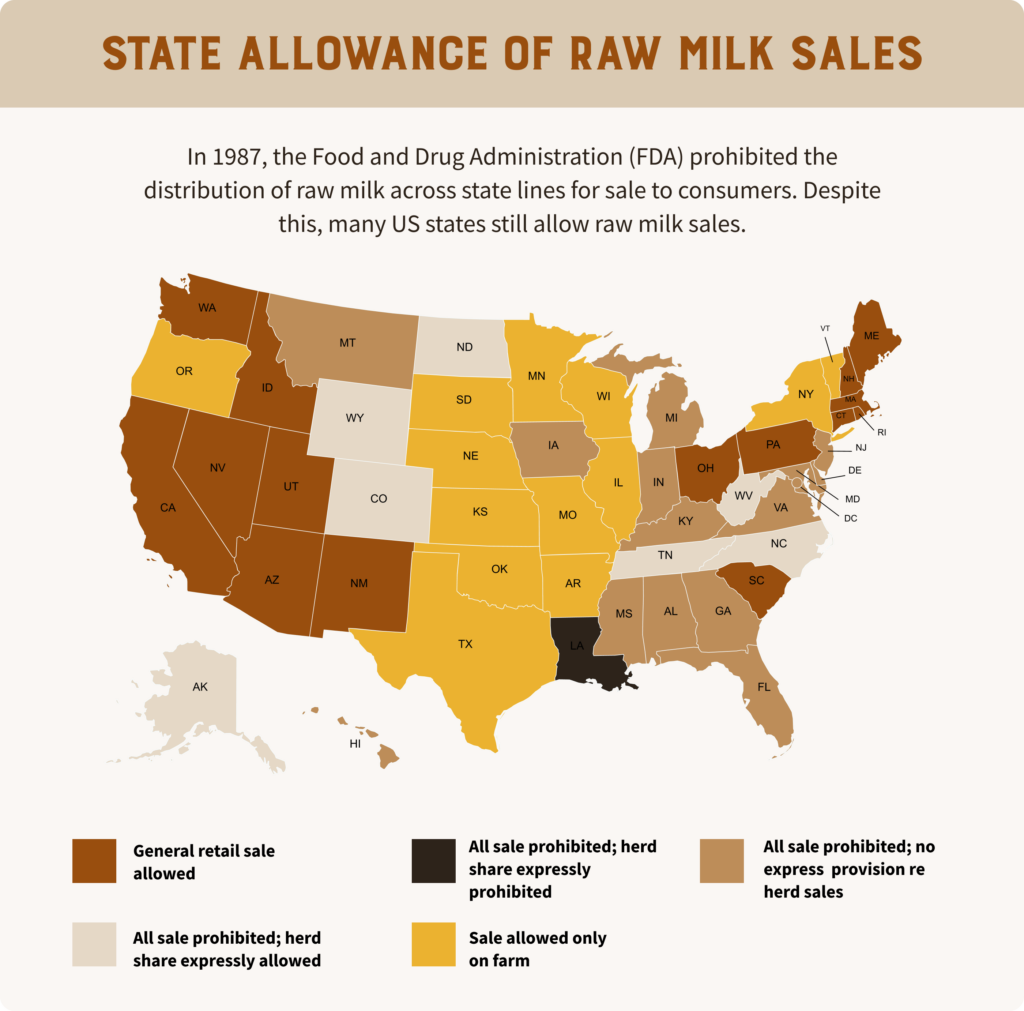
Canada prohibits raw milk sales for direct human consumption, but “herd shares” still exist in parts of Canada which essentially grants you partial ownership of a herd of cows (43).
If you want to purchase raw milk, here are four strategies to consider:
- Visit RealMilk.com or GetRawMilk.com and use their raw milk finder tools.
- Inquire at your local farmer’s market.
- Learn more about your state’s regulations with this interactive map from the farm-to-consumer legal defense fund.
- Explore the map of raw milk institute listed farmers and a list of questions to ask your raw milk provider.
Is Raw Milk Worth the Risk?
Every food, when mishandled or raised improperly, has the potential to lead to serious illness. Raw milk is no different.
Despite the risks, raw dairy is still treasured globally for various reasons.
Raw milk may help with challenges like eczema, allergies, asthma, and respiratory infections. You can also find countless testimonials from raw milk consumers who notice improved gut health, milk intolerance, and more.

When sourced properly, raw dairy products such as kefir, butter, or milk can be an amazing addition to your animal-based diet! You can find farmers around the globe who raise healthy animals, follow rigorous hygiene practices, and provide a safe, nutritious product.
Subscribe to future articles like this: